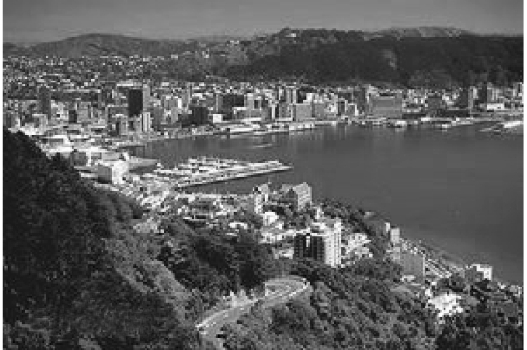B
New Zealand had an esti mated population of 4.5 million as of 2014.About three⁃quarters of people live in the North Island,especially in the areas around Auckland.European immigrants and their descendants make up about 74% of the population,the indigenous Maori 15%,Asians 12%,Chinese 4%,and non⁃Maori Pacific islanders 7%.English is the official language,though some minority groups like the Maori,the Chinese and the Indians have tried hard to ensure their children are bilingual.
The Maori people,like the Aborigines of Australia,are indigenous to the country.They are Polynesian in origin and probably came to settle in New Zealand in canoes during the period from the 9th to the 13th century AD.They speak a language related to the languages of many other Polynesian races such Tahitian and Hawaiian.The name“Maori”is derived from the term“Ma⁃Uri”,meaning the“children of heaven”.The Maori population today numbers about 600,000,with most of them living on the North Island due largely to its warmer climate.The Maori have retained much of their unique culture despite of their long period of interaction with Europeans.Maori culture has contributed greatly to New Zealand’s cultural diversity.
As regards religion,about 44% of the New Zealand population are Christian.The largest denominations are Roman Catholicism(11% of the population)Anglicanism(10.3%),Presbyterianism(7.4%),and Methodism(2.3%).However,only about 15% of believers are regular church⁃goers.As in Australia,there is no official state religion in New Zealand,but Anglican cathedrals are often used for state or formal occasions.
Another characteristic which New Zealand shares with Australia is a high degree of urbanization.Relatively few people live in the countryside,although there are many small towns of up to 10,000 people and some 20 larger towns of up to 20,000.More than half of the country’s population live in the four major cities:Auckland,Christchurch,wellington and Hamilton.Auckland,with a population of 1.4 million(about 1/3 of the country’s population,)is the main urban center on the North Island and the leading industrial urban area of the country.The city is known as the economic capital of the country and most major international corporations have an office there.Wellington,with a population of close to 400,000,is the second largest city in the country by population.It is the national capital of New Zealand.Located at the south western tip of the Northern Island,it is the southernmost capital of sovereign countries in the world.
Christchurch,with a population of a little over 341,000 in 2013,is the third largest urban center in the country and the largest city in the South Island.Chartered in 1856,Christchurch was officially the oldest established city in New Zealand.
Hamilton,located on the Waikato River in the North Island,is the fourth largest city in the country.With a population of a little over 153,000,it is the third fastest growing city in the country.

Wellington,New Zealand
